Who has knowledge has power over those who don’t know.
Prerequisite definitions
True knowledge refers to an understanding that aligns with reality, reflecting how things genuinely occur in the observable world. It is grounded in evidence and demonstrated through a scientific, system-thinking approach, ensuring objectivity and reliability.
False knowledge, on the other hand, consists of subjective opinions or interpretations presented as “alternative facts.” These are shaped by individual perspectives and influenced by factors such as culture, personal experiences, education, and beliefs, rather than being universally verifiable or grounded in objective reality.
Competitive advantage of Knowledge
In an age of growing confusion, where everyone holds an opinion they believe to be the truth, the true competitive edge will belong to those who can distinguish the signal from the noise in the digital soup overwhelming us.
True knowledge will become increasingly scarce in the age of AI. This idea isn’t new, but those who can discern the difference between mere “opinions” and true, reliable knowledge—and possess a framework to leverage that understanding—will hold significant power over those who don’t.
We don’t know what we don’t know
The best decisions are:
-
- Grounded in reliable data: The context (the 5 Ws) of data collection, transformation and reporting is known and validated.
- Made transparently: Both the data and its context are openly accessible and immutably described.
The key questions to consider are: Do I have sufficient data to support my decision? Is the data I have the right data to guide my decision-making?
It is about turning the right data into the right knowledge to make the best decision.
Transforming data into knowledge is the role of the information layer (as depicted in the figure below showing the DIKW model). Information represents contextualized data (or metadata) that provides extensive details about the context. This process includes defining the initial problem or question to address, as well as establishing and measuring success criteria. It also involves specifying the scope of the problem, question, or decision and linking it with the required raw data.
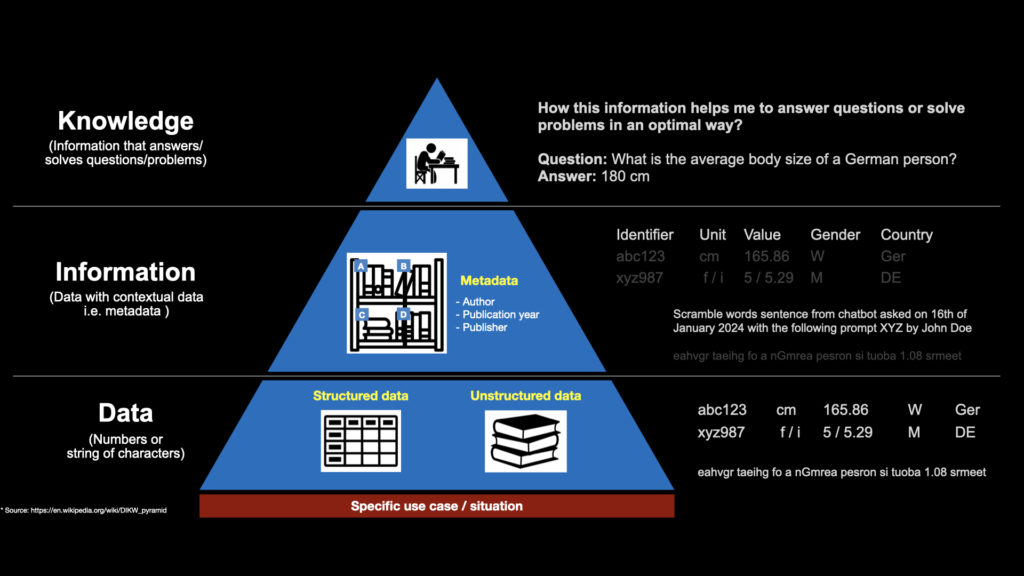
How good are our decisions?
In a globalized economy and interconnected ecosystem, every decision has a worldwide impact. However, these impacts are often neglected for simplification purpose, overlooked because of lack of concerns, ignored because of lack of understanding (especially system-thinking) or because they are voluntarily deemed “out of scope” for the sake of self-interest.
As the volume of data continues to grow (widening of the DIK pyramid as illustrated below), the contextual information surrounding it often remains inadequate. This lack of context makes it difficult to determine whether the data is appropriate for the task at hand and whether it can be trusted.
The hay stack grows exponentially but the needle size remains the same.
There is little to be known but it requires more and more resources to get it. It is increasingly difficult to:
-
- Identify the specific problem you aim to solve
- For what customers you do it
- Consistently measuring the value of your solution
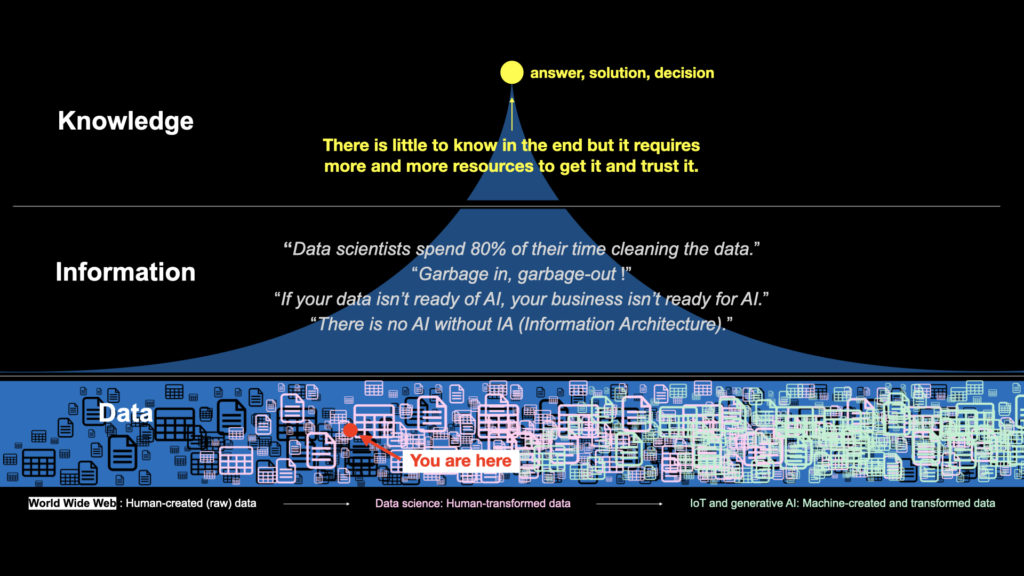
Disconnection from reality
Being unaware of what we don’t know and lacking contextual information to trust what we know i.e. data that we have:
We all make unaware decisions. When we realize it, we tend to hide, fake, or lie to evade responsibilities for unforeseen outcomes.
The scientific method, which relies on testing hypotheses through experiments, depends on a community of peers who adhere to its principles and build upon each other’s work. This consistent reference to observations and data is crucial for maintaining a connection to reality.
However, in business, corporate, social, or political contexts, there is often a noticeable lack of a science-based or systems-thinking mindset. This absence undermines the ability to ground decisions and actions in objective, evidence-based frameworks.
-
- How frequently do individuals cite sources to support their claims?
- How many times people will take the time and make the effort to check the sources in details?
- What factors influence whether individuals trust the cited sources without verifying them in detail?
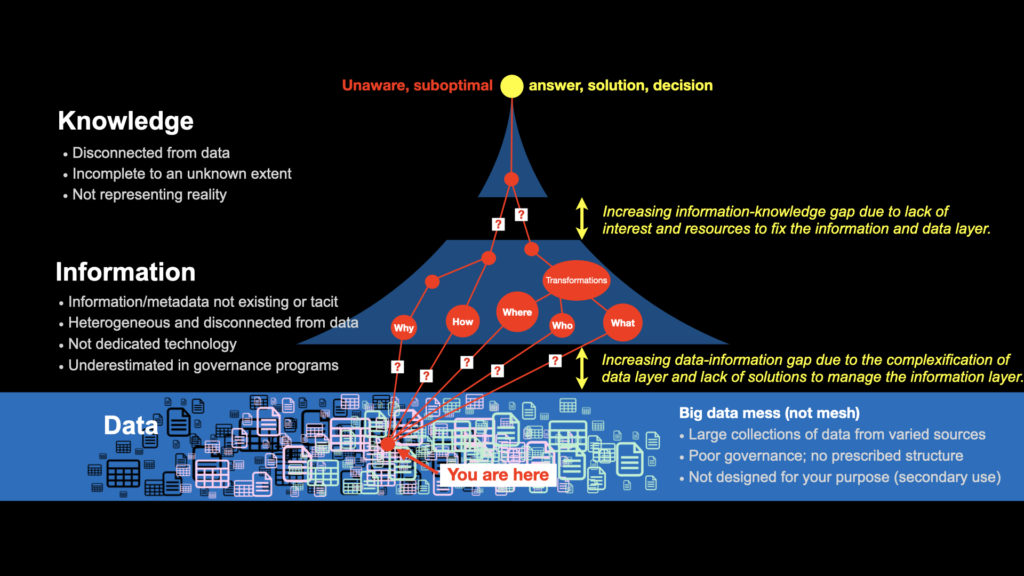
Will we give yourself the means to our ambitions?
Original human knowledge is being flooded under an exponential amount of AI-generated artifacts.
Genuine knowledge risks fading into digital oblivion, driven by techno-messianism—the belief that technology (including AI) is the ultimate solution to all problems. However, technology is merely a tool, neither inherently good nor bad. Its value (or lack thereof) lies entirely in how we choose to utilize it. The ongoing trend of deploying AI with minimal safeguards leads to the dilution and distortion of human-generated knowledge.
In this context, access to true knowledge may become a privilege reserved for a select elite. How much money, effort and time are you ready to commit to get “trustable” knowledge that will give you a competitive edge?
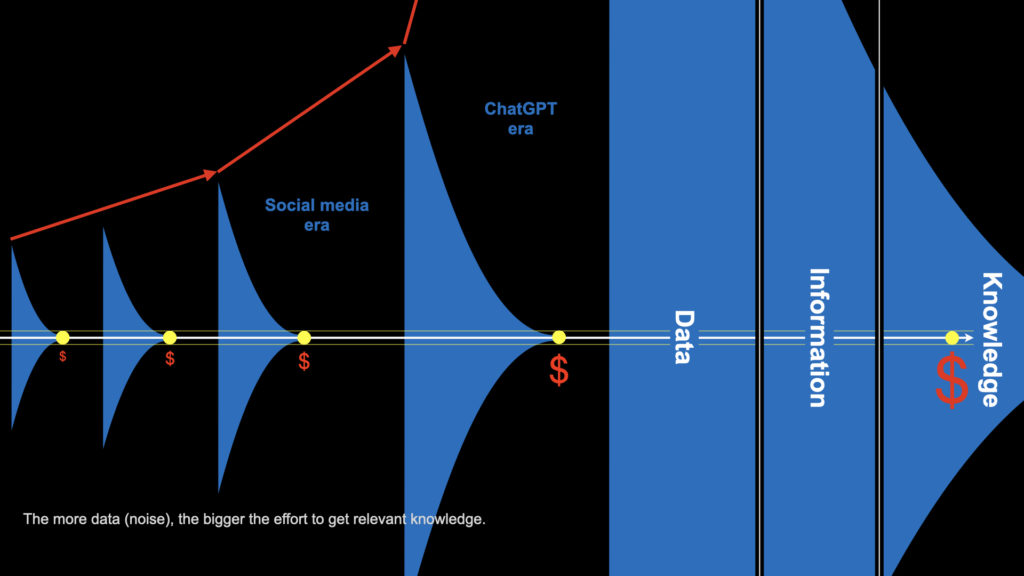
Knowledge (graph) as a service (KaaS)
BioMedima provides Knowledge as a Service or more precisly, people using a framework for decision-intelligence i.e. having he right knowledge to make the best decision.
Without touching raw data, without disrupting business activities, we help you creating a digital-twin of your organization by iteratively (on a use-case basis):
- Virtualize your data as a graph
- Create an information layer to contextualize your data
- Link it to your strategy and goals
This will eventually support optimized, trustable and transparent decision-making.
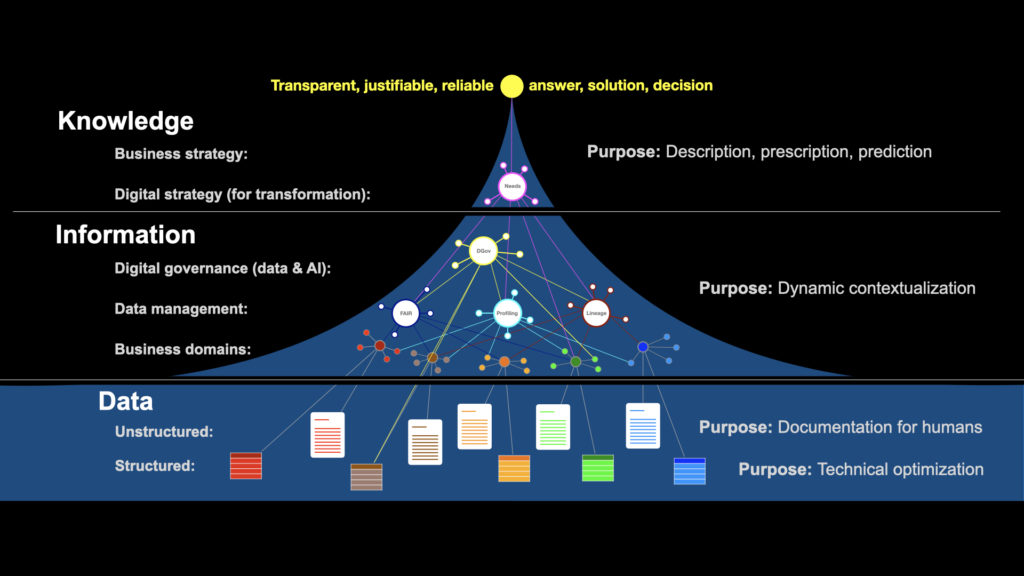
For more information, feel free to contact us
